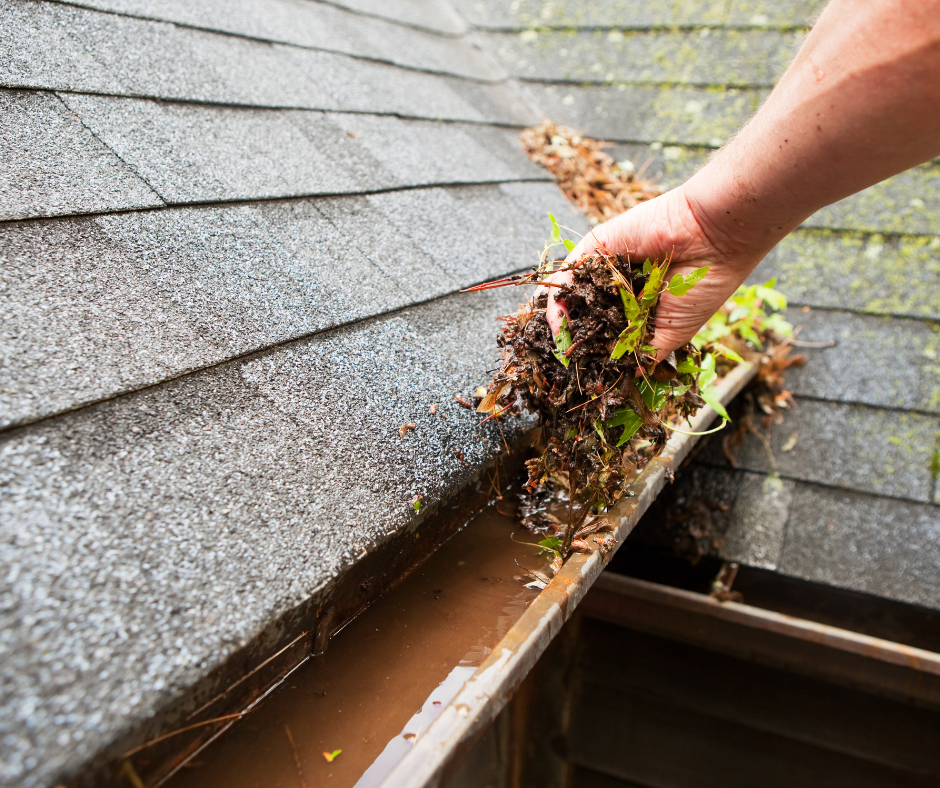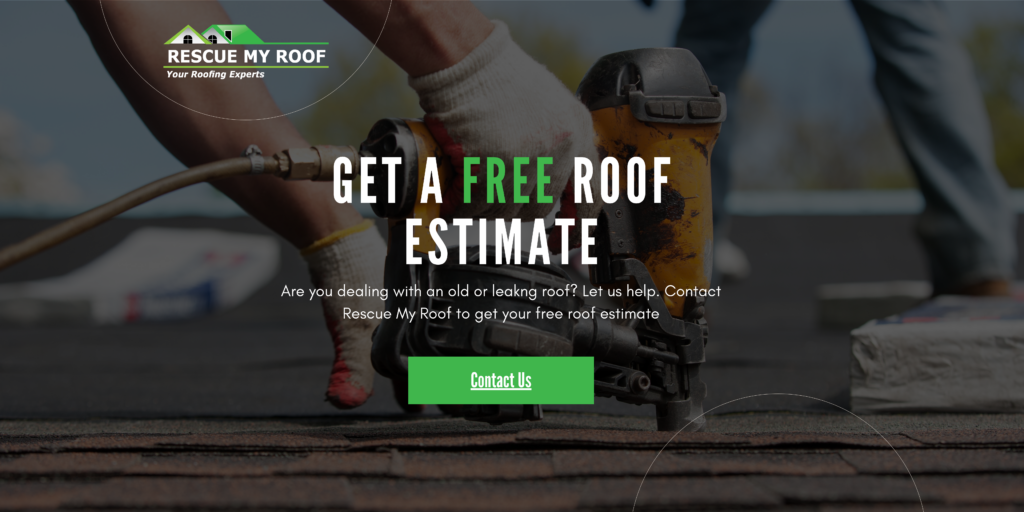DIY Roof Repairs: What You Can and Can’t Do Yourself
Your roof is one of the most essential parts of your home, providing protection from the elements and helping to maintain the structural integrity of the entire building. Over time, however, wear and tear or sudden damage from storms can lead to the need for repairs.
While some homeowners may be tempted to tackle roof repairs on their own, it’s important to know the limits of what you can safely and effectively do yourself.
For over a decade, Rescue My Roof has been saving homeowners from DIY-disasters with education and transparency.
In this blog, we’ll explore what types of roof repairs you can handle as a DIY project and which tasks are better left to the professionals.
What Roofing DIYs You Can Do Yourself
For minor issues and maintenance tasks, you can save money and time by performing some roof repairs on your own. However, even these DIY tasks require care and attention to safety.
Here are some common roofing repairs and maintenance jobs that most homeowners can handle:
1. Cleaning the Gutters

One of the simplest yet most important maintenance tasks for your roof is keeping the gutters clean. Clogged gutters can lead to water damage, as water may overflow and seep into the roof deck or siding.
What you’ll need:
- A sturdy ladder
- Gloves
- A gutter scoop or trowel
- A hose
Steps:
- Carefully set up your ladder, making sure it’s stable and secure.
- Use your hands or a gutter scoop to remove leaves, twigs, and debris.
- Flush the gutters with a hose to ensure they are draining properly.
2. Replacing Shingles
If you have a few damaged or missing shingles, it’s often possible to replace them yourself if you’re comfortable working on a ladder.
What you’ll need:
- Replacement shingles
- Roofing nails
- A hammer
- A pry bar
- Roofing cement or adhesive
Steps:
- Gently lift the shingle above the damaged one with a pry bar.
- Remove the nails securing the damaged shingle and slide it out.
- Slide the new shingle into place, aligning it with the surrounding shingles.
- Nail it securely and apply a bit of roofing cement to ensure a tight seal.
When to call a pro: If the damaged area is extensive or if you’re dealing with more than a few shingles, professional help is recommended. Large-scale shingle replacements can indicate underlying problems, such as roof deck damage or leaks.
3. Patching Small Leaks
If you’ve noticed a small leak coming from your roof, you might be able to patch it temporarily with roofing cement or a sealant.
What you’ll need:
- Roofing sealant or patch kit
- A caulking gun
- A trowel
Steps:
- Identify the source of the leak by inspecting the area above the water stain inside your home.
- Apply roofing sealant to the damaged or leaky area, covering cracks or gaps thoroughly.
- Spread the sealant evenly with a trowel to ensure full coverage.
When to call a pro: If the leak is persistent or widespread, it’s a sign of a bigger issue such as damaged flashing, improper roof installation, or worn-out underlayment. A professional roofer will be able to diagnose and repair the root cause of the problem.
4. Clearing Debris from the Roof
Over time, leaves, branches, and other debris can accumulate on your roof, leading to mold growth, moisture retention, and even damage to shingles. You can safely clear debris yourself if you have the proper safety equipment.
What you’ll need:
- A leaf blower (with an extension if necessary)
- Gloves
- A safety harness (if working on a steep roof)
Steps:
- Carefully walk along the roof or use a ladder to blow away or sweep off leaves, twigs, and dirt.
- Check around chimneys, vents, and valleys where debris tends to gather.
When to call a pro: If your roof is particularly steep or the debris is difficult to remove without damaging the shingles, it’s safer to call a professional cleaning service. Working on a steep roof without proper safety equipment is dangerous.
What Roof Repairs You Shouldn’t Do Yourself
While some roof maintenance tasks are manageable for the average homeowner, there are several repairs that are best left to professionals. Roofing systems are complex, and improper repairs can lead to more severe issues down the road.
Here are the types of roof repairs you should avoid doing on your own:
1. Replacing Large Sections of Shingles
While replacing a single shingle or two is within the realm of DIY, replacing large sections of shingles or performing a full re-roof is a major task that requires professional expertise. Improper installation can cause future leaks, blow-offs, or premature failure.
Why it’s risky:
- You may not have the tools to safely and securely replace large sections of roofing material.
- It’s easy to miss underlying damage, such as rotting roof decking or compromised insulation.
- Large-scale replacements require a deep understanding of roof slope, water drainage, and proper nailing techniques.
2. Fixing Flashing Around Chimneys and Vents
Flashing is the metal material installed around chimneys, vents, and other roof penetrations to prevent water from seeping into your home. Repairing or replacing flashing can be tricky, as it involves cutting and shaping metal to fit perfectly.
Why it’s risky:
- Incorrectly installed flashing can lead to serious water leaks, causing damage to the roof deck and interior walls.
- Flashing requires precise placement and sealing to ensure that water is diverted away from these vulnerable areas.
3. Repairing Roof Decking
The roof decking is the wooden layer beneath your shingles that provides structural support. If your roof deck becomes rotted or damaged, it’s crucial to replace it before applying new shingles.
Why it’s risky:
- Working on a damaged roof deck can be dangerous, as it may be unstable.
- Replacing roof decking requires removing large sections of shingles and underlayment, which can expose your home to the elements if not done quickly and correctly.
- Improper installation of the new decking can lead to an uneven surface, causing issues with shingle placement and water drainage.
4. Handling Structural Damage
If your roof has suffered from significant structural damage due to a storm, tree fall, or old age, the repair process can be highly complicated. Structural repairs involve more than just replacing a few shingles or applying sealant; they often require rebuilding parts of the roof frame.
Why it’s risky:
- Structural work may involve removing and replacing rafters, joists, or trusses, which requires a deep understanding of roofing systems and carpentry.
- Mistakes during structural repairs can compromise the integrity of the entire roof.
5. Dealing with Mold or Rot Issues
Roof leaks and poor ventilation can lead to mold and rot in the attic or roof deck. Handling mold can be dangerous to your health, and roof rot requires professional tools and materials to fully remove and repair.
Why it’s risky:
- Mold can spread quickly and requires professional treatment to ensure it’s fully eliminated.
- Roof rot compromises the structural integrity of the roof, and improperly handled repairs can lead to further damage and costly future repairs.
Knowing Your Limits
While DIY roof repairs can save you money and give you a sense of accomplishment, it’s important to know your limits. Minor maintenance tasks, such as cleaning gutters and replacing a few shingles, are manageable for many homeowners. However, larger, more complex repairs—such as replacing flashing, dealing with structural damage, or repairing the roof deck—should be handled by a professional.
Working with a qualified roofing contractor ensures that your roof is repaired properly, protecting your home and preventing future issues. If you’re unsure about the scope of a repair or the condition of your roof, it’s always best to consult a professional for a thorough inspection.
Learn more with “6 Roof Problems that Require A Contractor” and “DIY Roof Repair Mistakes to Avoid.”
Is your roof old and leaking? Contact Rescue My Roof today to get a FREE estimate.


